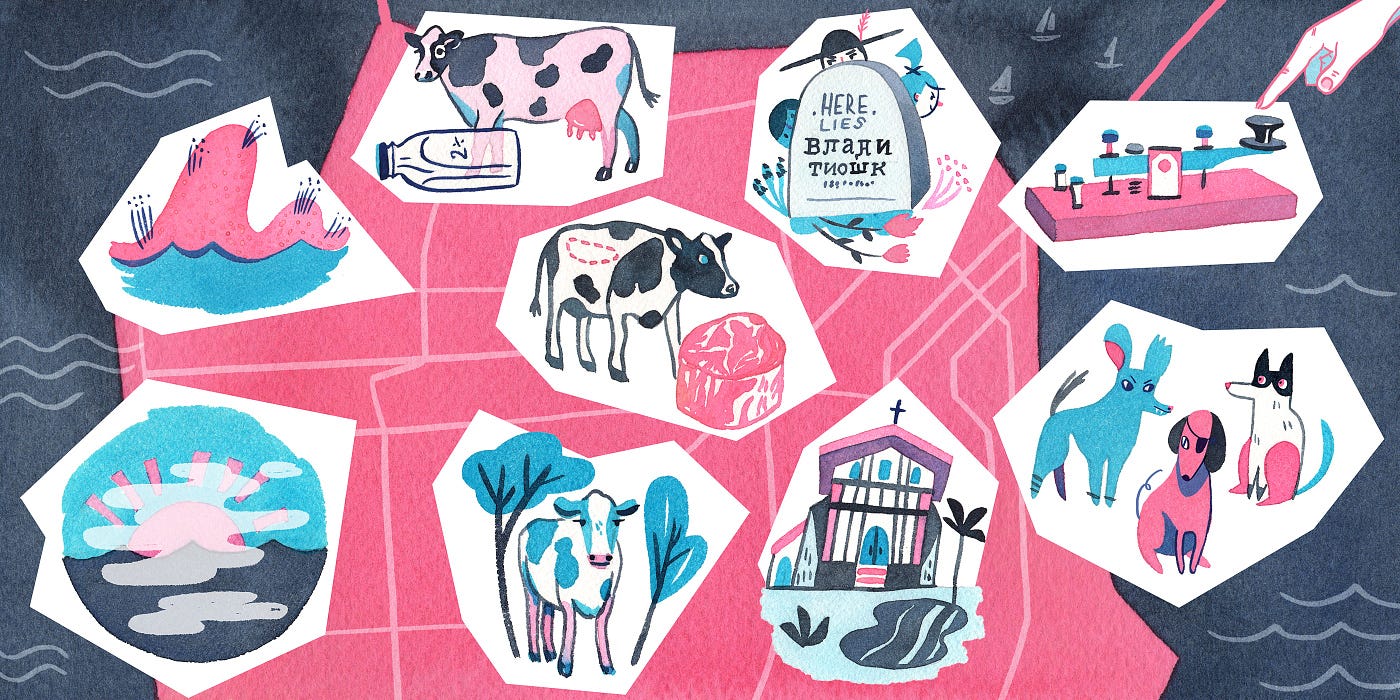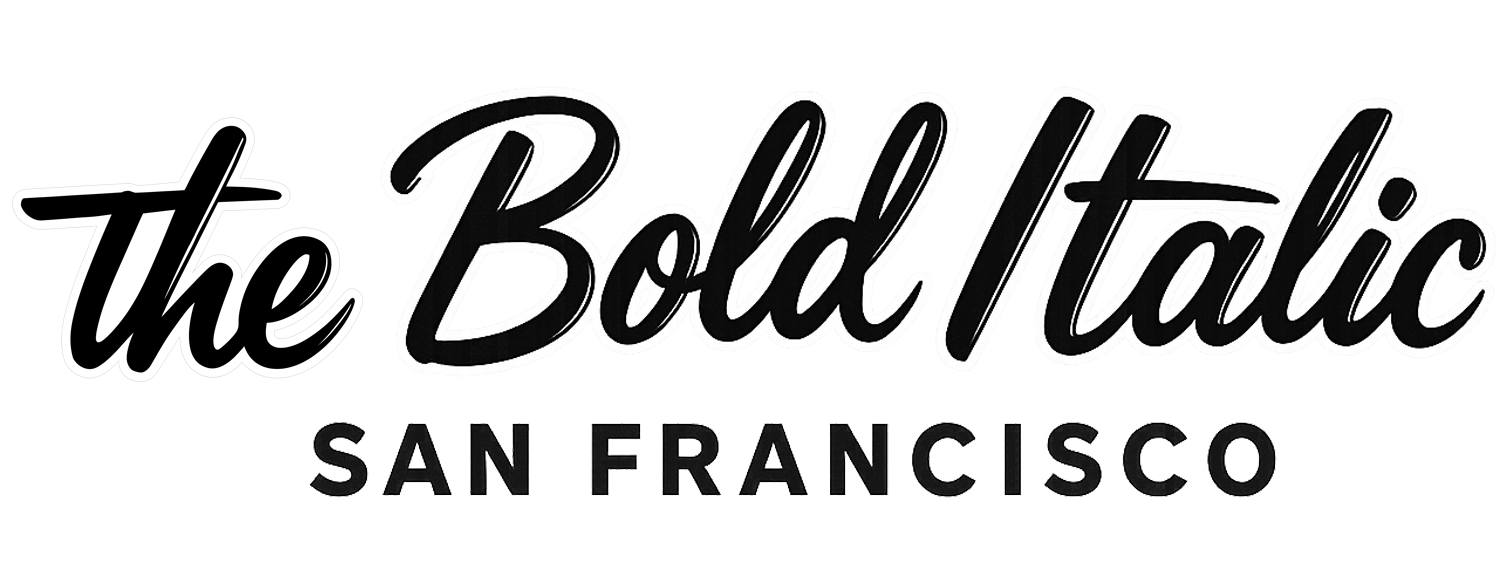By Kevin Lewis

This is a city of famously diverse neighborhoods, and looking at the history of our ’hoods gives us insight into some very San Francisco folklore. Below is a survey of what 14 different areas have been called over the years and the stories behind their names.
The Sunset
My first San Francisco neighborhood was the Outer Sunset, so I’m very aware that place names can be deceiving in this city. Curse you, former city assessor and real estate developer Aurelius E. Buckingham! Yes, he’s the guy who, in 1887, forever stamped irony on the map of San Francisco by naming the Sunset District, a location that is as fog shrouded and light challenged a place as one will find in this town. Prior to this time, the area — along with most of the west side of San Francisco — was called the Outside Lands.
As has been covered on this site before, a small part of the Sunset used to have a perfectly wonderful name. In the late 1800s, the Market Street Railway Company dumped its old horse-drawn streetcars out among the dunes, and some creative folks in need of new places to live paid between $10 to $20 (a little less than $250 and $500 in today’s money) for the outdated equine cars, recycling them in various permutations. They created a peculiar settlement of about 50 homes known as Carville by the Sea.
Cow Hollow
Cow Hollow once supplied the bulk of milk products for San Francisco. Dairy ranches occupied much of the area from 1860 to 1880, when the city’s Board of Health decided it would probably be a good idea to move the milking to a place that didn’t have an exploding population crowding in on all sides.
Telegraph Hill
Telegraph Hill garnered its moniker sometime in the 1860s, but its height and location meant it was a communications hub even before the telegraph. One of its several earlier names was Signal Hill. It was an ideal spot for a semaphore station that received early word of ships and cargo entering the Golden Gate from a sister station at Point Lobos. This gave enterprising San Francisco businessmen a knowledgeable leg up on the competition and, no doubt, rock-hard calves if they checked out the signs in person.
Russian and Nob Hills
The names of two other famous San Francisco hills, Russian and Nob, have slightly more interesting origins. Russian Hill reputedly owes its designation to indifferent parental-supervision standards in the 1850s. The kids who lived there used the graveyard, which was then located near the top of the hill, as a playground. Most of the graves belonged to Russian sailors or soldiers. The ankle-biters therefore began calling it Russian Hill, and soon everyone else did too.
The “Nob” in “Nob Hill” is probably a contraction of the word “nabob.” (It could also just be from the word “knob,” meaning an isolated hill, but that’s much less interesting.) Nabobs were provincial governors in Mughal India. When the British took over India, they borrowed the word, broadened the definition to mean any rich or important person, and eventually shortened it to “nob.” The San Francisco nabobs built extravagant mansions on the hill, all but one of which — the Flood Mansion, now home to the Pacific-Union Club — were destroyed in 1906.
The Mission
As you may suspect, the Mission is named for Mission Dolores, the oldest intact mission in California and the oldest intact building in San Francisco. What you may not know is that the mission’s official name is not Dolores, but was dedicated the Mission San Francisco de Asís on October 9, 1776. However, a small lake or possibly a spring (no one knows for sure) somewhere nearby had been named the Laguna de Nuestra Señora de los Dolores earlier that year. So like many a southern child (such as Ladybird Johnson or Miley Cyrus), the church was never really called by its given name.
The Castro
Not always named for the biggest neon sign in the area, the Castro was, from the 1930s through the 1960s, known as Eureka Valley. If you were one of the neighborhood’s many Catholics making small talk with another Catholic about where you lived, you might have said “Most Holy Redeemer,” named after the parish. In the 1910s and ’20s, the area was called Little Scandinavia because for about a generation it was heavily populated by residents of Swedish, Norwegian and Danish ancestry. Even earlier than that, it had been called Finn Town for a time. But all those designations were swept away by a fabulous blast of fresh air when the newly liberated gays of the 1970s took over the neighborhood and made it the epicenter of the gay rights movement. And named it after a movie theater.
Dogpatch
Once a busy industrial area that was also packed with hardworking residents, the newly revitalized Dogpatch neighborhood was called Dutchman’s Flat in the 1890s, according to San Francisco deputy sheriff Billy Carr in 1946, who was recalled his youth there. It became the Dogpatch sometime in the mid-twentieth century, but sources differ on why. The reasons range from botany (dog fennel) to packs of stray dogs to the Li’l Abner comic strip. Take your pick. On a sadder note, looming above Dutchman’s Flat was a neighborhood that no longer exists. Irish Hill, a predominantly Irish working-class area, survived being wiped out by a fire in 1887 but was no match for San Francisco’s need for more dry ground and less marshland. Irish Hill was cleared, flattened and used for fill by 1918.
The Tenderloin
Some neighborhoods are named after locations elsewhere. Our Tenderloin, apparently never the most desirable address, was named after New York City’s Tenderloin, which got its name because police working the area got hazard pay and could therefore afford a better cut of steak than their brethren.
The Richmond
George Marsh, one of the first settlers of the Richmond District, was the man who gave it that name because the dunes reminded him of the dunes where he grew up in Richmond, Australia (itself named after Richmond, England.) Prior to the late 1880s, the Richmond was lumped in with the Sunset as part of the Outside Lands because they were both (way, way, way) outside the boundaries of the city back in the day. If you currently live in either the Outer Richmond or the Outer Sunset and have tried to entertain friends who live in the Mission, the Castro or the Tenderloin, you know that many still view them that way.
The Western Addition
Speaking of boundaries, other areas are named for geographical realities that no longer exist. In the 1860s, Larkin Street was the western border of San Francisco, so when new development began beyond that, a large area became known as the Western Addition—which, if you ask some old-time San Franciscans, it all still should be, and NoPa (North of the Panhandle) should not be a thing. But the anecdotes you just read should have demonstrated in at least a small way the truism that fish gotta swim, birds gotta fly, and real estate developers gotta slap newer, “better” names on places that already had perfectly fine ones.
North Beach
Moving along to natural boundaries, the name North Beach hearkens back to the earliest days of San Francisco in the 1850s, when a finger of the bay still poked in between Telegraph and Russian Hills. The city’s northeast shoreline went only to Taylor and Francisco until it was filled in during the latter part of the 1800s. Yes, there was once an actual beach where, today, are found only strip clubs, Italian restaurants, cafés and the occasional Beat Generation fan looking for City Lights Bookstore. After nature pressed the reset button in 1906, the neighborhood’s proximity to docks and wharves attracted many Italian Americans, so sometimes it’s alternately been known as Little Italy.
Upper and Lower Haight
The Haight didn’t really get going until 1883, when the Haight Street cable-car line connected the east end of Golden Gate Park with downtown. “Haight-Ashbury” comes from the intersection of streets named for banker Henry Haight and supervisor Munroe Ashbury, and it of course has gotten most of the attention since at least the Summer of Love. But the Lower Haight, also known as Haight-Fillmore, was a vibrant African American neighborhood with a thriving nightlife right up until urban renewal in the 1960s.
Glen Park
Where did the dairies that had to move from Cow Hollow go? Many of them relocated to what is now Glen Park, but to San Franciscans in the 1880s, the area was known as Little Switzerland. Someone evidently took a look at the steep hills that surround Glen Canyon, figured in the Swiss love of dairy products and no doubt thought themselves clever.
SOMA
One former neighborhood name stands out above all the others in outshining its current label: South of the Slot. It’s a moniker that sounds somewhat dirty, possibly seedy and a little bit exciting. The neighborhood today known as SOMA, or South of Market, conceivably fit all three descriptions before it became a no-man’s-land of warehouses in the mid-twentieth century, but there was really nothing uncouth about the name. The slot in question was the hole in the ground for the cable-car line that used to run along Market Street.
Image by Monica Garwood.







